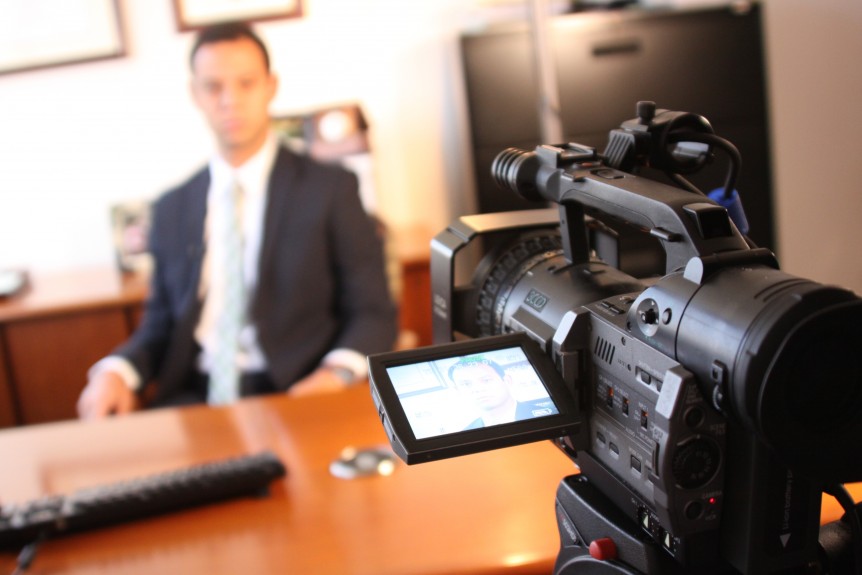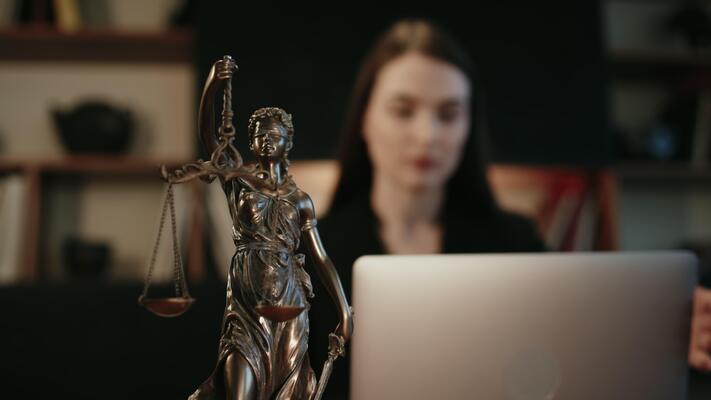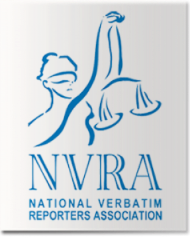Expert legal video vs traditional recording: Why quality matters?
Wiki Article
Devices and Tools
Quality legal video production depends greatly on customized devices and devices designed to record, modify, and provide clear and effective visual evidence. Crucial parts include high-definition cameras that assure crisp photo quality, along with microphones that capture audio with clearness, minimizing history noise. Tripods and stabilization systems boost the solidity of video footage, substantial for keeping audience focus. Illumination equipment is additionally crucial, as it helps illuminate subjects effectively, reducing shadows and improving exposure. In addition, mobile recording gadgets are usually utilized for depositions and interviews, guaranteeing adaptability in different settings. Inevitably, the best mix of these tools not only assists in accurate documentation yet likewise supports convincing discussions in the court, strengthening the honesty of the legal process.
Video Editing And Enhancing Techniques
Efficient legal video production extends past capturing top notch footage; it likewise encompasses advanced editing and enhancing techniques that improve the discussion of visual proof. One key method entails the careful choice of appropriate clips that finest support the situation narrative. Editors frequently make use of changes, such as fades and cuts, to keep viewer involvement while guaranteeing a sensible circulation of information. Shade modification and sound harmonizing are vital for clearness, permitting jurors to focus on the web content without interruptions. Additionally, message overlays can emphasize crucial points or give context, making complex info a lot more obtainable. expert legal video. By utilizing these editing and enhancing strategies, legal video professionals produce compelling aesthetic help that effectively convey the essence of the situation, eventually offering to enhance the disagreements presented in the courtroomPresentation Styles Clarified
While numerous discussion layouts exist, each offers an unique objective in the domain name of legal video production. Typical styles include depositions, test discussions, and video shows. Depositions generally catch witness statements, ensuring a trustworthy document for future referral. Trial presentations utilize edited video segments to succinctly share vital factors, typically boosted with graphics and annotations for clearness. Video clip shows act as visual help, supplying jurors with context and enhancing key arguments. Each format depends on sophisticated innovation, consisting of top notch video cameras and editing and enhancing software, to ensure clearness and professionalism. By picking the appropriate format, legal groups can effectively interact their narrative, promoting a more interesting courtroom experience that sustains their situation goals.Best Practices for Capturing Legal Video
Recording high-quality legal video needs mindful consideration of tools selection and arrangement, ensuring suitable illumination and sound top quality. Efficient editing and enhancing and post-production methods likewise play a vital role in offering the end product clearly and professionally. These best methods are important for preserving the stability and effectiveness of legal video paperwork.Tools Selection and Setup
Choosing the right equipment for legal video production is necessary for guaranteeing top notch video that meets legal standards. Experts normally choose high-definition video cameras with the ability of recording clear, detailed images. Tripods are crucial for security, preventing shaky video footage that can weaken the presentation. Furthermore, utilizing numerous video camera angles can boost the narrative by providing different viewpoints. It is additionally recommended to have backup recording devices to stop data loss. Storage space remedies must be reputable and sufficient to fit large video files. When selecting equipment, transportability is very important, as legal setups can vary in size and area. Lastly, video codecs need to be compatible with modifying software application to help with seamless post-production processes.Lights and Noise Top Quality
Effective illumination and audio high quality are essential elements in the production of legal video, as they considerably affect the clarity and professionalism of the last product. To accomplish ideal lights, it is necessary to utilize soft, diffused light resources that reduce extreme shadows and prevent glow. Position lights purposefully to illuminate topics equally, making sure all facial expressions and information are noticeable. Concerning noise, utilizing premium microphones is crucial; lavalier mics are typically liked for their ability to catch discussion clearly while lessening history noise. Furthermore, monitoring ambient sound degrees during recording can help keep audio consistency. By sticking to these best techniques, lawyers can improve the performance of their video discussions, ensuring they share the desired message with precision.Editing And Enhancing and Post-Production Techniques
After guaranteeing perfect lighting and sound high quality, the next stage in producing legal video includes precise editing additional resources and post-production methods. This stage is important for improving the clarity and professionalism and reliability of the end product. It usually consists of cutting unneeded video footage, remedying shade disparities, and changing audio degrees to ensure crisp sound top quality. Incorporating graphics, such as titles or comments, can assist emphasize bottom lines and supply context. Additionally, seamless shifts between sectors add to a coherent story flow. Legal video editors should additionally be mindful of conformity with legal criteria and personal privacy factors to consider, ensuring that delicate details is handled appropriately. Ultimately, effective editing and post-production elevate the quality of legal presentations, making them much more impactful in the court room.Incorporating Legal Video Into Test Technique
Incorporating legal video right into trial strategy can substantially boost the presentation of evidence and stories in the court. By successfully utilizing video, lawyers can supply visual context that strengthens their disagreements and assists jurors grasp intricate info quicker. Legal video clips can consist of witness statements, reenactments, or visual evidence that sustains the case, producing a compelling narrative that resonates with the audience.Additionally, integrating legal video enables critical pacing throughout a test. Attorneys can choose when to provide video evidence to maximize its influence, aiding to keep juror interaction and focus. Furthermore, using legal video can help with clear communication of bottom lines, making certain that important aspects of the situation are not forgotten. On the whole, including video components thoughtfully into trial strategy can greatly influence the court's perception and understanding, potentially guiding the end result for the here and now celebration.
Enhancing Jury Engagement With Legal Video
Although jurors often deal with details overload during trials, enhancing their interaction with legal video can greatly enhance their focus and understanding. Legal video functions as a vibrant device that transforms complicated information right into absorbable visual narratives. By incorporating video discussions, attorneys can successfully illustrate crucial evidence, witness statements, and situation timelines, making the material much more relatable and easier to comprehend.Visual elements catch jurors' interest, allowing them to soak up information extra effectively than with verbal descriptions alone. Additionally, using high-quality legal video can evoke psychological actions, fostering a deeper link to the situation. This emotional engagement can significantly affect jurors' understandings and decision-making procedures.
Inevitably, legal video not just click to read makes clear intricate information however likewise reinforces the overarching motifs of a test, ensuring that jurors remain engaged and educated throughout the procedures. As an outcome, it becomes an indispensable property in contemporary courtroom discussions.
Case Researches: Effective Usage of Legal Video in Trials
As attorneys increasingly recognize the effect of aesthetic narration, many situation research studies illustrate the effective application of legal video in trials. One remarkable situation included an individual injury claim where video depositions of witnesses substantially improved the court's understanding of the case. The vibrant images and emotional statements created an engaging narrative that influenced the jurors' perceptions.In another instance, a criminal trial made use of surveillance video footage to reconstruct the events leading up to a robbery (expert legal video). The video proof made clear variances in witness testaments, eventually guiding the jury's choice towards a conviction
A company litigation case showcased the tactical usage of animations to describe complex economic purchases, allowing jurors to realize intricate details easily. These examples highlight how legal video not just aids in providing proof yet likewise improves total engagement, bring about more educated court deliberations and results in numerous legal contexts.
Often Asked Concerns

Just How Is Legal Video Different From Typical Video Recording?
Legal video varies from her explanation conventional video recording in its objective and adherence to particular legal standards. It concentrates on quality, detail, and proper documentation, making certain that the footage is suitable for use in legal process.What Are the Costs Related To Legal Video Production?
The expenses linked with legal video production vary widely, influenced by factors such as equipment quality, modifying complexity, and the production team's know-how. Added expenses may include area costs and post-production services for suitable discussion.Can Legal Video Be Utilized in Appellate Courts?
Legal video can be used in appellate courts, largely as a device for demonstrating trial process. Nonetheless, its admissibility depends on jurisdictional policies and whether it serves to clear up the document or procedural issues.What Are the Legal Requirements for Utilizing Video in Court?


The legal requirements for utilizing video in court usually include adherence to rules of evidence, correct verification, ensuring significance, and conformity with administrative laws. These variables assure the integrity and dependability of the video proof offered.
How Do I Choose a Lawful Video Company?
Choosing a legal video service company includes examining experience, technology, and credibility. Take into consideration variables such as qualification, client testimonies, and schedule to ensure the service provider fulfills details legal demands and boosts court effectiveness.Report this wiki page